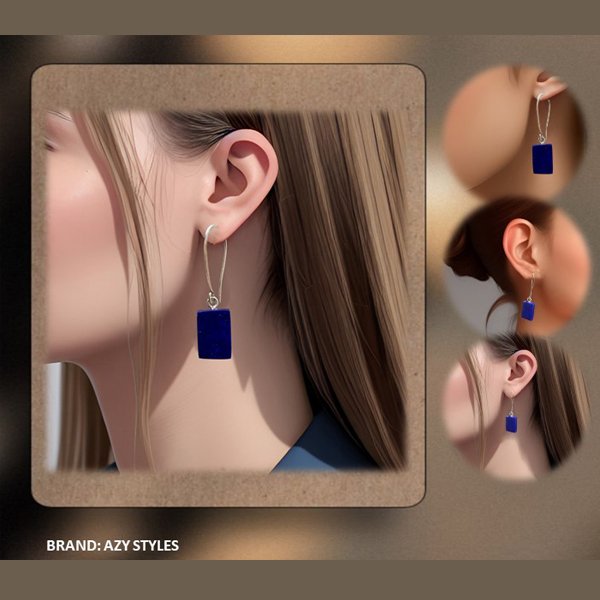
Exploring Lapis Lazuli: A Gemstone with a Ric ..
Apr 27 - 2024

The global beauty industry currently stands
at a substantial $532 billion, with the United States leading the market at a
20% share, followed by China (13%) and Japan (8%). Projections suggest
continued growth, with a compound annual growth rate of 5%-7%, potentially
reaching over $800 billion by 2025 (Forbes). The growth potential of beauty industry is quite variable but promising, here is an over view of how it was predicted and where it is not and expected to be in future.
The global wellness summit in 2019 has explain the beauty in a bit different way due to COVID out break at that time. The main points of the Summits are:
Pre-pandemic Growth and Current
Challenges:
Beauty and personal care segment, particularly
makeup and skincare, were thriving with a projected $75 billion global sales in
2019.
COVID-19 pandemic drastically impacted the
industry, with makeup sales declining significantly while skincare showed
resilience.
China experienced a quick rebound in makeup
sales from February to March, albeit with a notable shift towards online
purchases.
Opportunities for Innovation and Niche
Brands:
Adaptation and creativity are essential to
rebuild revenues, emphasizing service innovation and safety protocols.
Niche brands are capitalizing on the
market, experiencing significant sales boosts, particularly those offering
mood-boosting or wellness-focused products.
Shifts in Consumer Preferences:
Preference for natural looks and
mood-boosting beauty products over heavy makeup.
Increased focus on self-care rituals,
turning skincare routines into stress-relief practices.
Embracing Technology and Online
Integration:
Integration of digital platforms and
technology to enhance the retail experience, bridging the gap between offline
and online interactions.
Exploration of virtual consultations, DIY
salon offerings, and special services to cater to changing consumer behaviors.
Future Trends and Industry Outlook:
Rising interest in wellness and mental
health, driving demand for holistic beauty solutions.
Brands are redefining their identities with
authenticity, sustainability, and inclusivity, catering to evolving consumer
values.
Anticipated trends include a focus on
natural ingredients, upscaling aestheticians, and the convergence of medical
and spa services.
Social responsibility and community
engagement are becoming integral aspects of brand strategies, resonating with
consumers seeking purpose-driven initiatives.
According to a report published by Statista
the projection for Beauty & Personal Care market worldwide is expected to
make about $646.20 billion in revenue in 2024, which is way higher than the
prediction done by Global wellness summit in 2019. It's predicted to grow by
about 3.33% every year from 2024 to 2028.
The biggest part of this market is Personal
Care, which is estimated to be worth around $282.80 billion in 2024. In
comparison, the United States leads globally, generating $100 billion in
revenue in 2024. On average, each person worldwide is expected to spend about
$83.39 on beauty and personal care products in 2024. Additionally, online sales
are projected to make up about 19.2% of the total revenue in the Beauty &
Personal Care market by 2024. Despite the global recession, the beauty and
personal care market in the United States is doing well, especially with a
focus on organic and natural products (Statista reported).
The Beauty & Personal Care market
includes consumer goods for cosmetics and body care, encompassing categories
like cosmetics, skin care, personal care, fragrances, and beauty tech. It
excludes beauty services such as hairdressers and professional products.
Products primarily for medical purposes are also excluded but may be part of
the OTC Pharmaceuticals market. All sales values presented are retail values
and include sales taxes.
They further Structure the market into 5 segments:
1. Cosmetics: Including face cosmetics, lip
cosmetics, eye cosmetics, nails, and natural cosmetics.
2. Skin Care: Covering face skin care, body
care, sun protecting products, baby & child, and natural skin care.
3. Hair Care: Encompassing shower &
bath, oral care, deodorants, shaving, natural, and personal care.
4. Fragrances: Representing the consumer
market for perfume, Eau de Toilette, and any fragrances addressing normal body odor.
5. Beauty tech: Focusing on the development
and application of digital tools and devices to enhance beauty experiences,
improve skincare routines, and offer personalized beauty solutions.
Out of these 5 markets the beauty tech was
shown to got a higher boost in 2020 but then followed a decline and it is also
predicted that the beauty tech may gain momentum in 2024 again.